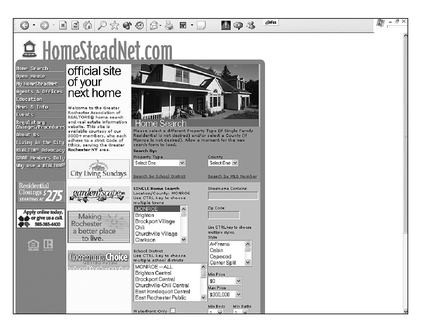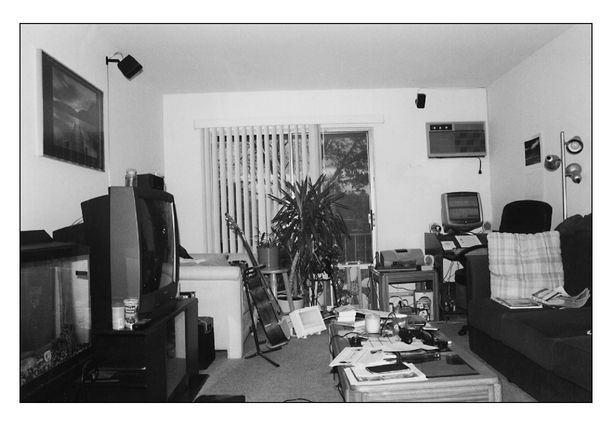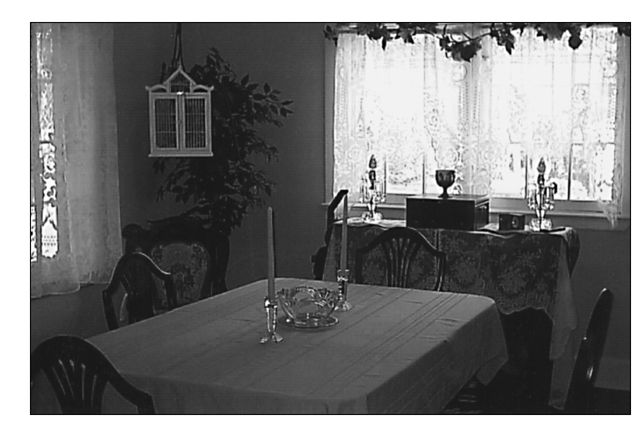Chapter 2
Start Shaping Up!
In This Chapter
• Sprucing up your space
• Improvements that boost your home’s value
• Staging a sale
• Home guarantee pros and cons
The old adage, “You never get a second chance to make a first impression” is never more applicable than with home sales. Home buyers want to be “wowed” at first sight by your place—anything less is likely to turn them off.
Fortunately, there is a lot you can do yourself to impress potential buyers. Some improvements, like repairing serious plumbing leaks or updating electrical work, may require professional help. But most projects, like getting rid of clutter and cleaning, you’ll be able to tackle yourself.
Investing muscle, and a little money, will pay big dividends when it comes time to put your place on the market. An attractive home yields more interested buyers and increases the likelihood you’ll get offers close to—or above—your asking price.
To Improve or Not?
Homebuyers are attracted to homes that are bright, spacious, and clean. Though you can’t change your home’s layout to make it bigger, you can easily make it sparkle.
Unless you’re content to accept less than the market value for your home, get ready to invest some time and energy readying your home for sale.
Why Appearance Can Kill a Sale
Think a little clean up doesn’t matter? Think again. Although you may be totally comfortable living with dirty dishes piled high in the sink and kids’ toys strewn about the house, a disheveled house suggests to buyers that you haven’t been taking care of the place. No one wants to move into a home that has not been maintained properly or regularly. And even if they can see past the dirt and items needing repair, they’re going to offer you far less to take on those projects themselves.
FSBO Facts
The typical buyer takes an average of three minutes to see a home the first time, according to Julie Dana of TheHomeStylist.com.
FSBO Facts
Preparing and fixing up a home for sale is the second most difficult task for FSBO sellers, reports a 2003 National Association of Realtors “Profile of Homebuyers and Sellers.” The first is understanding the paperwork.
Your challenge is to look at your property with the eye of a buyer. Try and take a step back, or ask a friend or neighbor to help you, and tour your home as buyers will. What stands out? What are any negatives they may spot? Where does your eye go as you enter each room? What do you smell as you first enter the home? Be ruthless.
Your goal is not to show your house as you’ve lived in it, but to show your house in the best possible light—so it will sell. There’s a difference. And when selling your home, the littlest things can matter most.
To ensure you’re covering all your bases, or uncovering all your eyesores, use this handy checklist as you tour your home:
Improvements Checklist
• Curbside view
• Family room
• Front walkway
• Living room
• Front door and entryway
• Kitchen
• Front landscaping
• Mudroom/pantry
• Roofline
• Garage door and front
• Sides of property
• Garage interior
• Standalone mailbox
• Powder room
• Back deck/patio
• Master bedroom
• Back yard
• Additional bedrooms
• Front foyer
• Bathrooms
• Dining room
• Laundry area
• Hallways
• Attic
• Closets
• Basement
As you enter each room, what is your first impression? What could you do to improve the room’s appearance? And what would make the space seem bigger or brighter?
You’ve just drafted your basic to-do list.
FSBO Facts
Buyers make up their minds in the first 15 seconds. The rest of the time is spent justifying their initial decision, says Julie Dana of TheHomeStylist.com.
Research, Research, Research
“People who are buying a home are comparing available homes on the market.
Sellers should, too,” says James Thomas Webb, CEO of CitiRise Redevelopment Corp. in Weston, Florida. Webb, who has decades of experience buying and refurbishing homes for investment purposes, strongly recommends that sellers look at comparable homes on the market to see what kinds of improvements will yield the best return. Before you go replacing perfectly good plumbing fixtures or installing a new high-end sink, find out what the standards are for your neighborhood.
For example, look for information about the type of flooring in area homes—is it hardwood, linoleum, tile, or carpeting? Do the homes have central air? What kinds of kitchen appliances are frequently mentioned? Are they Kenmore, GE, or Viking? And what kind of countertop is common? Do most homes have laminate, Corian, or granite? Make sure you’re comparing apples-to-apples in terms of home features so you can spot the strengths and weaknesses of your home. One tool for finding like homes in your area is www.forsalebyowner.com.
To learn what features homes in your area have, turn to your local Multiple Listing Services (MLS) website. For instance, in Rochester, New York, www.homesteadnet.comlists all homes in the area for sale with complete descriptions and photos (see the figure that follows). If you can’t find an online source with local real estate listings, you can purchase a list of comparable properties at www.forsalebyowner.com/appraisalsfor between $5 and $30. This information also will help you determine an appropriate price for your home.
MLS websites like this one in Rochester, New York, are an excellent resource for researching properties like yours.

Researching what most homes feature will help you assess where your home may fall short in a buyer’s eyes. And that’s where you should start your improvement efforts in order to get the biggest bang for your buck.
On the Outside—Improve Curb Appeal
The initial decision to look at your home is frequently made based on its outward appearance. Some buyers will do a “drive-by” to scope out the exterior of your home. And based on its curb appeal—what they see from the street—they’ll decide whether or not to go inside.
Assuming your home is already in decent structural shape, there are many things you can do to spiff up its appearance.
The Exterior
Improving your home’s exterior appearance may take a little effort, but if you’ve been keeping up with needed repairs, it shouldn’t be very involved.
A fresh coat of paint is always a good idea, especially if the home’s wood siding is chipped or peeling. If you have aluminum siding, soapy water or a professional pressure wash will help get rid of built-up dirt and dust.
A doorway that stands out is also a plus, so consider giving it a fresh coat of paint, or wash, too. Torn window or door screens should be replaced, which isn’t hard to do, and windows should be cleaned.
If you have a front porch or landing, clean it off and make it more inviting, such as with a small chair or table with flowers. Or if you’ve been using it as a storage area, clear it out.
Flowers and plants add charm and life to a front stoop or door, but don’t go overboard. Too much of anything is distracting and causes a cluttered appearance.
Seasonal decorations, such as holiday lights strung across the roofline or fabric ghosts hanging from nearby trees, should be taken down. Again, it’s just too distracting.
The Yard
Spending a little time to make your yard neat and clean is also worth it. Some buyers have told us they have refused to even enter homes with overgrown or unkempt yards. The house may have been neat-as-a-pin inside, but the yard full of tall grass and weeds was a major turnoff.
Here are some of the simplest things to do to get your yard ship-shape:
• Mow the lawn, especially right before a showing or open house.


Selling Smarts
Unless it’s winter and your walkway is covered with snow, spend a little money on colorful perennials and plant them. You’ll draw attention to your home and suggest to potential buyers that you’re meticulous, which boosts the value of your home.

Sales Snafu
A big mistake some homeowners make is tackling too much all at once. Instead, start small or stagger your efforts. For instance, mulch your flower beds one weekend, install flowers the next, and trim all the bushes the following weekend, rather than planning to do it all at once.
• Pick up any dog droppings—preferably before you get the lawn mower out.
• During the winter, make sure all the snow is neatly shoveled from walkways.
• Cut back any trees or shrubs blocking front windows.
• Trim overgrown trees or bushes.
• Pull weeds from the flower beds and loosen the soil with a hoe or spade.
• Replace any burned out light bulbs in front lights or lanterns.
• Consider installing low voltage lighting to edge a walkway or as an uplight beneath a tree to show off its height.
• Edge the lawn, trimming any grass hanging over on the driveway or sidewalk.
• Sweep the front sidewalk and driveway.
• Store kids toys, sports equipment, and other outdoor accessories that may be laying around.
Your lawn may not make or break a sale, but a clean, neat one will add to the overall positive image of your home.
More Than a Pretty Face
Although home improvements generally increase the overall value of your home, some improvements are better than others. The average amount recouped from home improvement projects in 2004 was 80.3 percent, according to Remodeling magazine’s “Cost vs. Value Report,” which is down slightly from the 2003 average of 86.4 percent. That means for every $1,000 invested in improvements, homeowners earned back an average of $803.

Selling Smarts
The appearance of some home finishes are more important than the brand name, says James Thomas Webb, CEO of CitiRise Redevelopment Corp., which specializes in renovating homes. For instance, you don’t need to invest in a $2,000 high-end kitchen faucet if you can find a similar looking one for $200 at Home Depot. Nor do you need to overpay for a new fancy showerhead or dovetailed kitchen cabinet drawers. Instead, come close to the look of the upscale features by buying their lower-priced cousins.
Remodeling magazine reports the following national averages for the top 15 home improvements in 2004:

If you’re not up for one of these major renovations, take heart. You can significantly improve the appeal of your home without adding another bathroom or increasing the square footage of the home.
Basic Interior Improvements Worth Your Time
Beyond making repairs, it often pays to update home fixtures. Even if older features still work well, buyers are more likely to appreciate new home trimmings than old. For example, a new, white elongated toilet base and seat is worth much more than the $160 it costs to buy and install, when compared with the existing 1960s-era peach-colored unit with ratty seat.

Selling Smarts
When hiring professionals to handle improvements, be on the lookout for smaller independent workers. By flipping through ads in your local pennysaver newspaper, you can find contractors who do the actual work themselves. Be sure to get competing quotes and check references, but don’t rule out working with lesser-known handymen.
Kitchens and baths matter most to buyers, say the pros, so any investment in new or upgraded features can boost the appeal of your home right off the bat. Webb of CitiRise advises evaluating your existing:
• Kitchen cabinets
• Countertop
• Faucet
• Appliances
• Toilet
• Bathroom sink faucet
• Showerhead/bath faucet
If you find from your research that other area homes have one or more features that your home is lacking, focus on finding upgrades that look like, but don’t cost like, more expensive accessories. For example, swapping out an older lime green laminate refrigerator with a new stainless steel replacement, but not necessarily a top-of-the-line SubZero model. Or exchanging a very traditional kitchen faucet with a modern, more contemporary one; buying a high-end-looking faucet instead of a $600+ authentic, imported European one.
Although market conditions and housing prices vary widely, Webb has found that, on average, he can perform the most important upgrades on a 2,000 sq. ft. home for under $5,500. That includes $2,000 for new carpeting, $1,800 for kitchen and bath upgrades, and $1,200 to have a pro repaint the home, with a $400 budget for paint.
Staging Secrets the Pros Use
Buyers ask themselves three major questions when they tour a home, explains Julie Dana of TheHomeStylist.com. They want to know:
1. Can I imagine myself, or my family, living here?
2. Is this an easy, carefree home to live in?
3. Is this a good value for my money?
To help buyers answer these questions affirmatively, your home needs to be decorated and arranged in a particular way. This process is called staging or home or property enhancement.
Dana offers the following staging tips to make the best impression on buyers:
• Remove. You’ll want to take out anything personal, so buyers can imagine themselves in your space. This includes family photographs, toiletries, mail, and special collectibles (see the figures that follow).



Tools of the Trade
Staging, which is a registered trademark of StagedHomes.com, describes the process of preparing a home for sale, making it as appealing as possible by cleaning, rearranging, and decorating it for maximum impact.

Before: Remove personal items. (Photo by Julie Dana of The Home Stylist)

After: A cleaner look. (Photo by Julie Dana of The Home Stylist)
• Declutter. Clear all papers, knick-knacks, and junk from countertops, tables, and corners. Either throw it out, if you know you don’t need it anymore, or box it all up and store it out of sight (see the figures that follow).

Before: Declutter the living areas. (Photo by Julie Dana of The Home Stylist)

After: A cleaner look. (Photo by Julie Dana of The Home Stylist)

• Clean. “The house needs to be absolutely sparkling clean,” says Dana, who advises washing windows inside and out, shining the kitchen sink, dusting baseboards, bleaching grout around tiles, in addition to a basic scrub-down. Wipe down the walls, use glass cleaner on mirrors, hanging artwork, and the fronts of kitchen appliances. Clean the carpets, mop the floors, wash the rugs.
• Repair. Take care of any minor patching needed on walls, regrout or retile worn areas in your bathroom or kitchen, replace broken windows, and finish any unfinished projects you’ve been meaning to get to.
• Freshen. If it’s been a while since you’ve painted, put a new coat of paint on your walls. Neutral colors, like white, beige, and tan, are the safest choice. Removing wallpaper is also smart, replacing it with neutral paint.
• Air out. Buyers should not be able to smell any odors in your home, which means airing out cooking odors, emptying garbage pails, and cleaning out the litter box long before buyers stop by. Cookies baking in the oven or potpourri on the stove are two ways to mask any odors while buyers are there.
• Hide. “Do not have daily housekeeping supplies visible to potential buyers,” says Dana. “This includes laundry baskets and dish drainers—nothing to remind people that there will be work to do in this house.” Buyers want to live in an easy-to-care for home; removing signs of work helps meet that need (see the figures that follow).


Before: Hide household supplies. (Photo by Julie Dana of The Home Stylist)
After: A cleaner look. (Photo by Julie Dana of The Home Stylist)

• Reduce. Although this step is frequently overlooked by sellers, says Dana, it’s one of the most important. To make your home appear spacious, with plenty of room to grow, you should take out about half of your possessions. That means taking out extra furniture as well as clearing out items in your closets. All of your closets should be no more than half full, suggesting that there is more than enough space to live in, and meeting a buyer’s need to find a good value for the money (see the figures that follow).
And don’t just relocate everything to somewhere else in the house—you need to get it off-site, or at least out of site. Depending on how much stuff you have, a local self-storage facility is a good option. If that doesn’t work for you, try and contain everything in one area, either in the basement, attic, or garage. If you determine that you don’t want to move a lot of it, hold a garage sale or donate it to a nonprofit (ask them to pick it up).

Before: Reduce visible items.
(Photo by Julie Dana of The Home Stylist)

After: A cleaner look.
(Photo by Julie Dana of The Home Stylist)
For many homes, these basic clean-up steps may be enough. The key is to clear out anything that interferes with a buyer’s ability to picture themselves living there.
Hiring a pro to stage your home can cost anywhere from a few hundred dollars to a couple thousand dollars, with the return on that investment estimated to be two to three times the cost, says Neal Hribar, a California-based property enhancement professional. But by following these recommendations, you should be able to tackle many of the enhancements yourself.
Good to Guarantee?
Buyers have fears about buying a home. Is it the right one? Is it big enough? Are we paying too much? Will we like it? Will something major go wrong with it right after we buy it? You can’t alleviate many of these concerns, but you can remove the risk of major repairs by purchasing a home warranty. At a cost of around $400, you can make your home more attractive to buyers. According to a Gallop Poll, eight out of 10 buyers would prefer to buy a warranted home over an unwarranted one.

Tools of the Trade
A home warranty is a service contract purchased to protect the seller from a major household expense while the home is listed for sale and up to a year after closing. Generally, major systems like heating and air conditioning units, plumbing, and electrical, as well as appliances, are covered against breakdown.
FSBO Facts
Homes with home warranties sell for up to 3 percent more, on average, than those without, according to a BusinessWeek magazine article cited on a Prudential Realtors website.
Home warranties are attractive for several reasons, besides attracting more buyers:
• You’re protected against costly repairs while you’re gearing up to move to a new home. A small deductible may be required for each repair call, however. The Home Warranty Association of California reports an average of 1.7 to 2 claims per contract per year occur.
• Homes with warranties sell faster than unwarranted ones, according to the National Home Warranty Association.
• You reduce the chance of a dispute over a defective appliance or mechanical system, which can delay a closing. Just call your warrantor and get it taken care of.
• You also reduce the odds of the buyer asking you to cover the cost of something that broke down after closing. The warranty would cover it.
Many real estate agents are now including home warranties as part of the package they offer sellers. Nearly nine out of every 10 existing home sales on the West Coast includes a home warranty, reports the Warranty Association of California, which suggests you may be at a disadvantage without one.
The Ugly Duckling—Making the Most of an Unattractive Home
So what do you do when you fear your home’s appearance may scare away buyers? Follow the advice of fashionistas everywhere: downplay the negatives and highlight the positives.
Every home has its pros and cons—some are just more obvious from the road. If that’s the case with your place, you’ll want to do everything you can to improve your home’s worst feature. And there is always something you can do.
If your home’s worst side is visible from the street, you can either try and cover it up, or draw buyers’ attention away from it. For example, if your home is a 12th floor condo with windows all facing the backside of a rundown industrial plant, you’ll want to keep everyone’s attention on the interior. Use beautiful window treatments with sheer curtains to cover up the view without blocking the light. On the other hand, if you live in a house with a bleak, unattractive front yard, you have a little more control over the environment. You may choose to punch up the color on the house or the trim, as well as add a few bushes or trees to liven the space. If the architecture is hideous, there is little you can do to fix it. However, you can cover it, by installing window awnings, for instance, or adding some tall bushes and vines.
Look for ways to play up your home’s best aspects, too, whether it’s the size of the yard, the ample sunlight that flows through the house, the newly renovated kitchen, or cozy fireplace. Draw attention to whatever you believe is the home’s biggest selling point; that may be as obvious as hardwood floors throughout, or as intangible as being in the best school district around.
If you have no trouble drawing buyers in, but they’re turned off by an aspect of the home’s interior, our advice is the same—play up the positives, cover the negatives. For example, if the home seems dark, stock up on white paint and give all the rooms a facelift. Or install additional lighting wherever you can. If your home is energy efficient, or is part of a municipal utility, and has below average utility costs, set your monthly utility statements on the kitchen counter to catch the eye of fiscally responsible buyers coming through. If it seems small for the square footage quoted, take out more furniture, remove wall hangings and artwork—don’t worry about it looking bare. Err on the side of empty.
Remember, all you need is one buyer, one person or family, who falls in love with your place.
Online Resources to Help Shape Up
For more information about topics covered in this chapter, check out the following websites:
• www.electronicappraiser.com. For a report containing comparable home information, as well as an appraisal of your home’s value, check out this website. Prices start as low as $3.95, with a complete report costing $29.95.
• www.foresalebyowner.com. Download our e-book, The Complete Guide to Buying and Selling Your Own Home, for tips on readying your place for sale.
• www.hgtv.com. See HGTV for tutorials on home improvements and decorating, compliments of shows like Designed to Sell and Curb Appeal.
• www.hmsnet.com. Visit this website to learn more about home warranties, how they work, and what is covered by HMS National Home Warranty.
• www.homewarranty.com. For information about home warranties and to apply for one online, visit Fidelity National Home Warranty.
• www.lowes.com. Check out the Home Solutions section of the site for online instruction on everything from installing appliances to replacing broken tile to doing a quality paint job.
• www.stagedhomes.com. Visit this site to search the directory of certified staging professionals nationwide. Find someone locally who can help you put your home’s best foot forward.
The Least You Need to Know
• The best thing you can do to improve the appearance of your home is to clear it out—your furniture and knick-knacks—and clean it up—everything from putting a fresh coat of paint on the walls to steam-cleaning the carpets, decluttering all the surfaces, and airing out the rooms.
• Appeal to your buyers’ psychological needs for a spacious, clean, easy-to-live-in home by removing all traces of cleaning products and implements, as well as personal keepsakes and toiletries.
• Research what other homes in your area have feature-wise and invest in little upgrades to match those. Appearance is more important than brand name, so don’t buy the top-of-the-line.
• Consider investing in a home warranty to eliminate any fears buyers may have about buying your home, especially if it happens to be older. Studies indicate homes with warranties sell faster and for more money.
..................Content has been hidden....................
You can't read the all page of ebook, please click here login for view all page.
